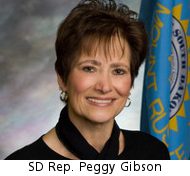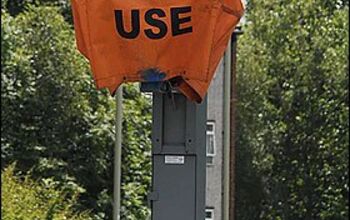South Dakota House Votes to Ban Photo Enforcement
The South Dakota House of Representatives voted 43 to 24 on Tuesday to prohibit the use of red light cameras and speed cameras in the state. A bipartisan group of lawmakers led by state Representative Peggy Gibson (D-Huron) took aim at the controversial automated ticketing machine set up in Sioux Falls, describing the due process denied innocent motorists ticketed by the system.
“My constituent not only did not own the car that was photographed, but she was not even in Sioux Falls at the time,” Gibson said Tuesday. “In other words, she was presumed guilty of a traffic violation she did not commit in a car she did not own, but she had to go to great lengths to prove her innocence.”
Sioux Falls hired the Australian contractor Redflex Traffic Systems to set up the cameras without legislative authorization. A lower court judge has already ruled the system violates state law ( view decision). To address the issue, the House-passed legislation provides a straight-up ban on “photo radar speed detection” and use of a “photo monitoring device to detect any red light violation” by any “state, county, municipal or township authority.” At the request of the state attorney general, an amendment was added to clarify that dashcams may still be used by law enforcement. That did not satisfy a handful of members who defended automated ticketing.
“This situation right here is a matter that should be addressed to the Sioux Falls city council,” state Representative Stace Nelson (R-Fulton) said, using material provided by the local police chief. “This is a local issue, they have jurisdiction on this…. I want to remind you that the reason the light was there to begin with is the loss of a human life. Now I’m not going to ask you to quantify how much the life of one of your loved ones is worth.”
State Representative Gene G. Abdallah (R-Sioux Falls) took issue with that characterization, pointing out that the camera was set up at the intersection specifically because it was one of a handful in the state where right turns on red are prohibited. Many motorists get tickets at the location not knowing they have done anything wrong.
“That is nothing but a traffic trap,” Abdallah said. “Unfortunately, someone was killed on that corner. Is there a camera on every corner where someone is killed?”
If the bill is passed by the full state Senate and signed by the governor, South Dakota would become the sixteenth state to ban automated ticketing machines. Five other states are considering joining the list by enacting photo enforcement prohibitions. The bill’s other primary co-sponsors included Jamie M. Boomgarden (R-Chancellor), Elaine Elliott (D-Aberdeen), Jenna Haggar (I-Sioux Falls), Mark Kirkeby (R-Rapid City), Betty Olson (R-Prairie City), Lance S. Russell (R-Hot Springs) and Charles M. Turbiville (R-Deadwood).
House Bill 1161 as passed (South Dakota Legislature, 2/8/2011)
[Courtesy: Thenewspaper.com]
More by The Newspaper
Latest Car Reviews
Read moreLatest Product Reviews
Read moreRecent Comments
- EBFlex It will have exactly zero effect
- THX1136 What happened to the other companies that were going to build charging stations? Maybe I'm not remembering clearly OR maybe the money the government gave them hasn't been applied to building some at this point. Sincere question/no snark.
- VoGhost ChatGPT, Review the following article from Automotive News: and create an 800 word essay summarizing the content. Then re-write the essay from the perspective of an ExxonMobil public relations executive looking to encourage the use of petroleum. Ensure the essay has biases that reinforce the views of my audience of elderly white Trump-loving Americans with minimal education. Then write a headline for the essay that will anger this audience and encourage them to read the article and add their own thoughts in the comments. Then use the publish routine to publish the essay under “news blog” using Matt Posky listing the author to completely subvert the purpose of The Truth About Cars.
- VoGhost Your source is a Posky editorial? Yikes.
- Fed65767768 Nice find. Had one in the early-80s; loved it but rust got to it big time.Still can't wrap my head around $22.5K for this with 106,000 km and sundry issues.Reluctant (but easy) CP.


































Comments
Join the conversation
In the 2000's, many speed cameras were installed in France. People started to trick the system for example by transforming a "6" into an "8" with black tape, putting mud on the plate number or steeling plate numbers in airports. Some people even attacked the speed camera with a hammer, an other guy was placing explosives until he lost his hands after a wrong manipulation. No matter the stupidity and stubbornness of people, speed cameras helped to tremendously reduce the number of death on the road. Speed is now more enforced; it's annoying because you constantly have to check your speedmeter, but it apparently saves lives.
In the case of an intersection as described in the link, this is indeed a very likely possibility. But what about a speed camera on the highway ? What about a speed camera in a school zone ? I also would like to see a system to detect car that refuses priority to pedestrian when they cross and it's green for the pedestrians. I,m fed up risking my life everyday. There isn't enough cops, and we don't want more cops, but people are not always respectful either.